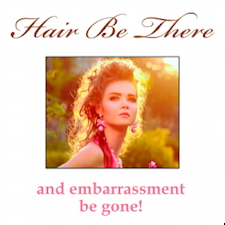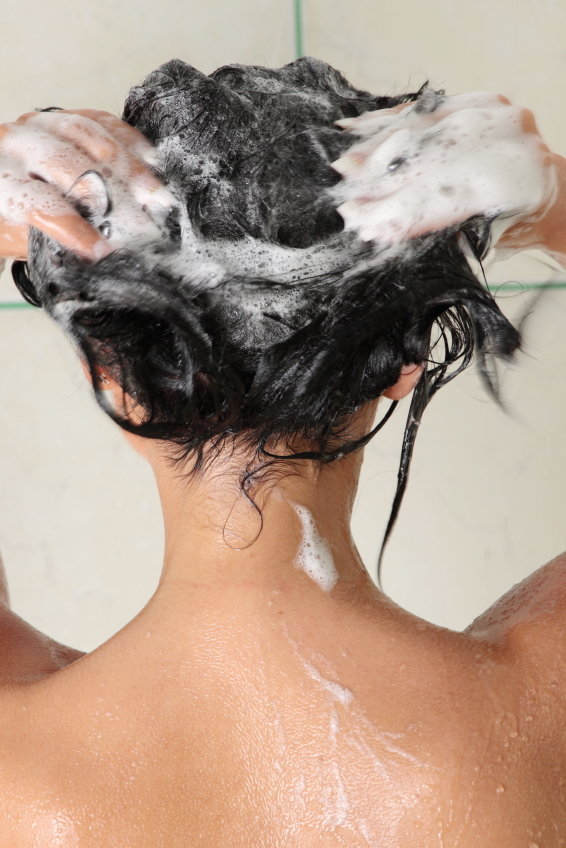Description
Hair Be There Nightly Scalp Oil is a serum which is half of a two-part program to help revive the scalp and hair. It is the partner of Hair Be There Shampoo and this serum is the key to the system.
Shake the serum (with the lid firmly on) to mix water and oil ingredients before use, part the hair to reveal the scalp and apply the serum gently with your fingertips to the scalp. You may do this at night before bed, which is recommended to give the scalp a long exposure to its phenomenal ingredients, or anytime. Once a day is most likely enough. If one applies the serum to the scalp at night, it can be washed off (does not have to be) if you shampoo with Hair Be There Shampoo the next day.
Hair Be There Nightly Scalp Oil is loaded in plant extracts and essential oils known to stimulate circulation to the hair follicle (root) and remove excess sebum (body oil that can suffocate the follicle). We think you’ll be very pleased with our Hair Be There!
Realize that we make absolutely no claims regarding this product or the Hair Be There System. Read the Disclaimer below.
Possible Causes of Hair Loss
There are many possible causes of hair loss. To list some: mineral imbalances; stress; drugs; malnutrition including that brought on by eating disorders; harsh surfactants in common shampoos; genes/heredity but only a tendency to balding not the occurrence of it necessarily; toxic exposure (pesticides, heavy metals, etc.) including exposure to radiation; anemia; hormonal imbalances; liver and/or kidney weakness; fungal infections, particularly ringworm.
Also, repeatedly tying the hair back too tightly as with rubber bands, hair clips and so on can cause bald spots. I noticed several years ago that my hairline was receding from this…yikes!
A Test to Check the Health of the Hair Root
The root, also known as the papilla, grows underneath the skin and is the only actually living part of the hair. It receives nourishment from blood, so good circulation to your scalp is crucial. Here is a test you can do to see if your hair root is healthy or not. If you pull out a hair and inspect the root closely, you can detect a weak or dead root by the shape. A healthy or normal root has a bulb at the bottom resembling a tiny Q-Tip swab tip and that bulb will be larger than the shaft, about twice the size. A weak or dead root is smaller than the shaft, certainly not larger than it, and may also be pointed (as different than bulbous). The shaft may not grow straight from it but be wavy and of varying thickness. The shape of the bulb helps hold the hair in the skin/scalp. If you find a weak, possibly dead root, take another from another area on your head. A few of these could indicate a need to revitalize your scalp and repair your roots.
The condition of your hair tells you much about your health: A healthy person’s hair is likely to shiny and the scalp to be moist and pliant. A less healthy person is likely to have duller hair and the scalp to be waxy and more rigid. Major life changes and even lesser ones can make such a difference in the appearance of our hair…have you noticed? This also applies to the skin and nails and, although unseen, to inner functioning of organs and such. Stress causes us to do dumb things like rush more, skip good meals and eat junk, eat sweets (which feed parasites, viruses and bacteria and get us on a roller coaster of energy peaks and plunges), get less sleep and so on down the slide. Under stress, the body can overproduce certain hormones and glands and other systems just tire out. As you will see below, good nutrition (and its path to the hair root, the blood) is crucial to having a healthy head of hair.
That’s is what’s behind sluggish or halted hair growth. But what causes most hair loss is excess oil. This oil, which we also call sebum, can plug up scalp pores and thereby counters new follicle growth. I suppose the root needs freedom of motion and air because it becomes asphyxiated and dies. With Under sebum clogged pores even stronger hairs cannot push their way through to the surface. In this scenario, one loses hair but it does not get replaced.
Temporary hair loss: Hair loss can be temporary, such as during illness or with dietary changes or after having had a baby, and in this case, the hair loss often follows two or three months after whatever brought it on and does cease eventually as the body returns to balance.
How hair grows and how it falls out; what is normal hair loss: Hair grows readily from healthy roots. The usual rate of growth is about a half-inch per month over a period of 2 to 6 years and then the hair takes a break…it rests for about 90 days at which point it is pushed out by a new hair making its way to the surface. Usually, about 90% of a head of hair is growing and about 10% is on a siesta before being pushed out and replaced.
Luckily we have plenty of hairs: the average scalp boasts about 1,000 hairs per square inch. The approximate number of hairs on a redhead’s head is 90,000. A black head of hair is about 108,000, brown about 110,000 and a blond has the most, about 140,000. A normal head of hair loses about 80 to 100 hairs a day. If your loss is in that range (hard to say exactly but anyway) you most likely have no hair loss problem. Massive hair loss is not normal, though. And, interestingly, no hair loss, no shedding or very little, is an indicator of a problem. This means that you are not producing new hair growth (remember that new hair growth pushes out existing hairs).
The growth of new hair depends upon the amount of nourishment reaching the developing root. Your blood must circulate well to your scalp, which, like your feet and hands, is an extremity of your body and one that is at the top, not as likely to get circulation unless you hang upside down or stimulate your scalp with massage and stimulating essential oils.
I hope that this info is useful to you and yours.
Disclaimer: While we make every effort to research and develop the finest natural products, we offer our products as-is and with the understanding that we make no structural or functional claims for them.
Statements made by customers giving their experiences with products are personal testimonials and any results are not claimed by us to be typical. Our customers are encouraged to try the products and see for themselves. Statements made on this website have not been evaluated by the FDA.
We are not licensed medical practitioners. We, obviously, do not examine, diagnose, treat or prescribe for anyone nor do we do anything that could remotely be considered offering medical advice. We merely state data that can be verified by independent research, which we encourage our visitors and customers to do. We do feel that one owns one’s body and as such can best be responsible for its care and that, with that purpose in mind, truthful natural health information is not only our right to give (as per the First Amendment of the Constitution of the United States of America) but is ethical to give. We write well-known, time-honored and otherwise available health data — which is data, no more, no less. We expect and encourage people to consult in any health decision a licensed practitioner and very preferably one well trained and oriented in natural methodologies.





Reviews
There are no reviews yet.